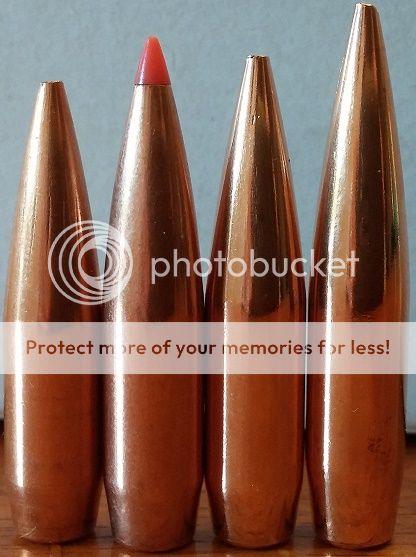ohiohunter
Well-Known Member
- Joined
- Oct 5, 2012
- Messages
- 1,670
So I have a sinclair measuring tool to measure my chamber length. From the rear of the action you put a bullet in the chamber and measure then measure the length to the base of a case. Take this measurement and add the bullet length and it should tell you the OAL.
Now what I did was all the same measurements, but instead of the entire bullet length I measured from the base to the ogive of the bullet. I did get consistent measurements, but it was not repeatable w/ different bullets. Why?
I am under the impression that using the comparator will give me my base to ogive measurement regardless of the bullet used b/c it is measuring the same point on the ogive as the next. I understand bullet length will effect this, but shouldn't that be factored out when measuring off the ogive vs overall length of the bullet? I expect some variation b/c some bullets sneak into the lands more than others, but I have about a 0.040" range.
Now what I did was all the same measurements, but instead of the entire bullet length I measured from the base to the ogive of the bullet. I did get consistent measurements, but it was not repeatable w/ different bullets. Why?
I am under the impression that using the comparator will give me my base to ogive measurement regardless of the bullet used b/c it is measuring the same point on the ogive as the next. I understand bullet length will effect this, but shouldn't that be factored out when measuring off the ogive vs overall length of the bullet? I expect some variation b/c some bullets sneak into the lands more than others, but I have about a 0.040" range.

